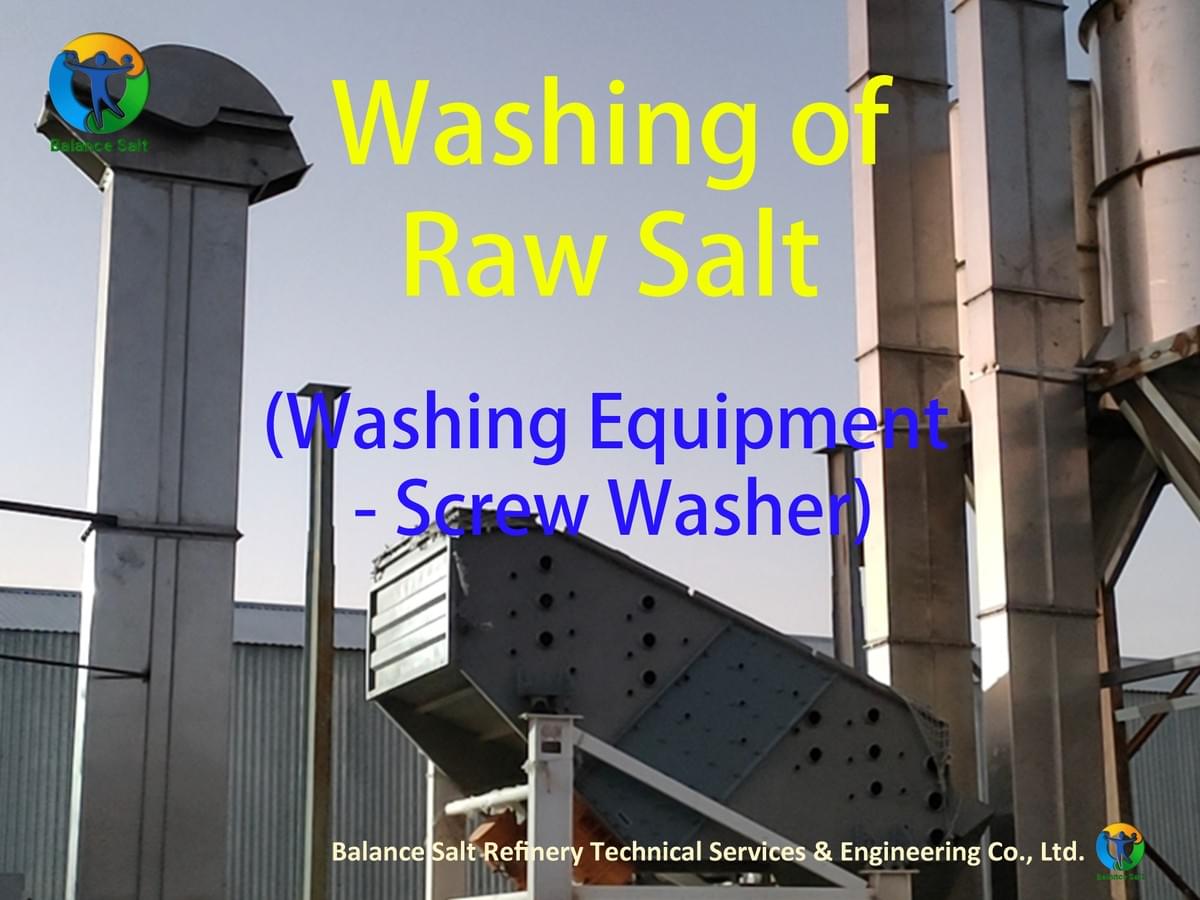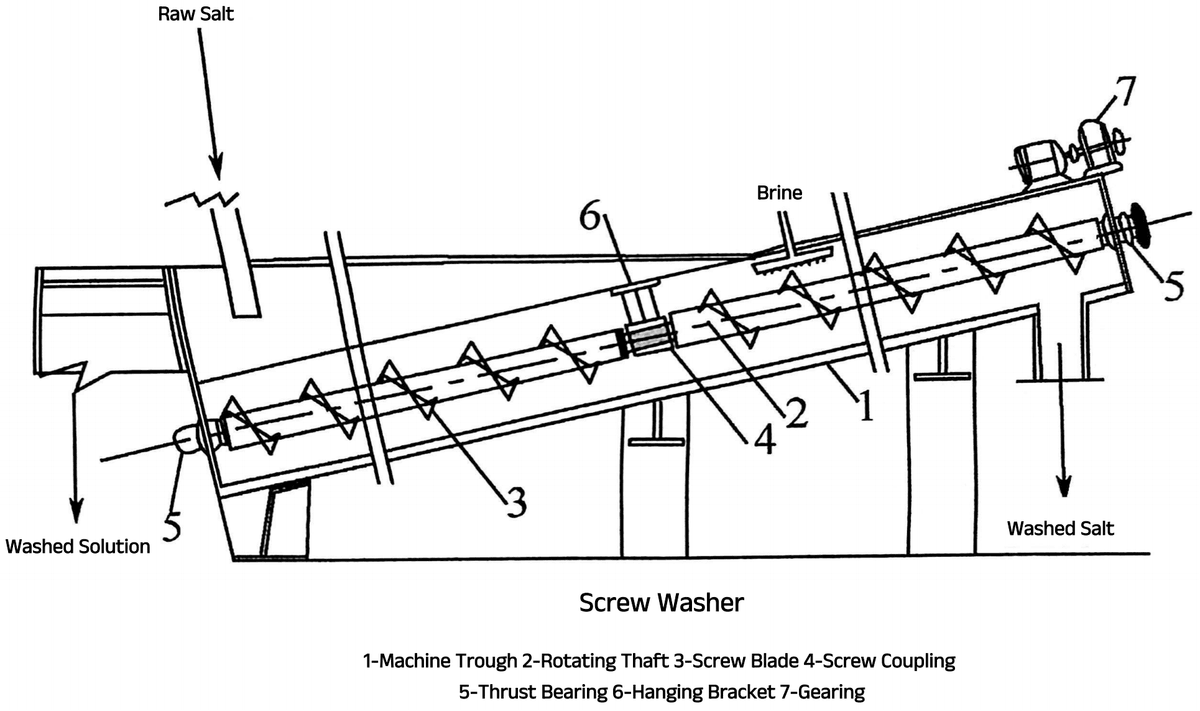Washing Equipment
Based on the washing principle, the salt washing equipment should meet the following criteria:
1. the salt and washing liquid should be fully in contact within the equipment to facilitate the removal of soluble impurities;
2. there should be an overflow device design that favors the separation of insoluble materials.
Currently, the commonly used washing equipment in the production of crushed and washed salt mainly includes screw washer, scraper washer, and countercurrent washer. Stirring tanks are generally used as the final washing equipment and also serve to adjust the solid-to-liquid ratio.
Screw Washer
The screw washer is a device based on the principle of the screw conveyor and equipped with components such as a washing liquid inlet pipe and a washing liquid overflow port to achieve the washing of raw salt.
(1) Structure of the Screw Washer
The screw washer mainly consists of parts such as the machine trough, screw coupling, thrust bearing, hanging bracket, transmission device, inlet and outlet, brine spray head, overflow trough, and other parts.
① Machine Trough
The length of the salt washing machine body is generally 9 to 15 meters. Stainless steel troughs are mostly used, with a semicircular bottom. To facilitate handling, installation, and maintenance, it is connected by multiple sections, each approximately 3 meters long. The connections and edges of the trough are made of angle iron, which facilitates connection, enhances the strength of each section, and makes it easy to fix the hanging brackets. The trough end plates at both ends of the machine trough serve as the support frame for the screw shaft, and the trough body is equipped with a brine overflow trough and outlet.
② Screw Coupling
The screw coupling is composed of a rotating shaft and screw blades welded onto it. The shape of the blades is full-leaf. The rotating shaft comes in two types: solid steel rods and hollow steel tubes, with diameters ranging from 50 to 100 mm. The hollow steel tube shaft is thicker, which has a certain impact on the transport capacity. Each shaft is 2 to 3 meters long, and the shafts are connected by couplings or short shafts. A certain gap is maintained between the screw surface and the machine trough. To ensure installation and transportation, the gap is generally 5 to 15 mm.
③ Hanging Bearing (also known as Hanging Bracket)
Its role is to bear part of the equipment's weight and share the force generated during the rotation of the shaft. The hanging brackets should not be set too densely, as the screw surface will be interrupted at the location of the hanging brackets, causing material accumulation and increasing resistance. Additionally, the overall dimensions of the hanging brackets should be as small as possible, as this will reduce the resistance when materials pass through. The steel trough of the screw washer uses a split bearing hanging bracket structure, which can be selected based on the abrasive properties of the materials. The upper part of the bearing hanging bracket is the hanging bracket, used to fix it onto the longitudinal angle iron frame of the trough, and the lower part is the bearing of the screw. There is an oil filling hole at the top of the hanging bracket, allowing grease to be injected into the bearing to maintain lubrication.



